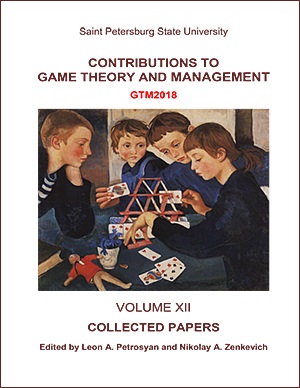Shapley Value in Cooperative Working Capital Cost Game for Distributive Supply Network
Abstract
Working capital management (WCM) is increasingly recognized as important means of liquidity and profitability improvement (Talonpoika et al., 2016), specifically in terms of globalization and growing competition between supply chains. At the same time, rising financial risk in supply chains (SCs) stimulated management to recognize that the financial side of supply chain management (SCM) is a promising area for improvements. Nevertheless, companies still focus on their individual SC issues and take their own interests into account rather than understanding the whole SC and cooperating with their partners (Wuttke et al., 2016). We address this gap by developing cooperative game of working capital management aimed at minimizing total financial costs associated with each SC stage. The model is verified on the grounds of the combination of game-theoretical modeling and case study of Russian collaborative SC. The suggested model analyses working capital management process for 3-stage supply network. The focal network is a distributive supply network consisting of N suppliers, one distributor and M retailers connected through material, information and financial flows. The members of the network an form coalitions with the distributor. Each member's working capital position is constrained by liquidity and profitability requirements. As such, they face the need to control and manage financial costs associated with each stage. We construct cooperative working capital cost game. For this cooperative game we investigate Shapley value as an optimal imputation. Theoretical results are illustrated with the numeric example of a real-life supply network from ICT industry. The investigated model provides financial illustration for the motivation of SC partners to cooperate in order to simultaneously achieve target levels of working capital investments and improve individual financial performance through collaborative actions.
Keywords:
Working Capital Management, Supply Chain Finance, Cooperative Game, Cost Imputation, Nondominant Cost
Downloads
References
Downloads
Published
How to Cite
Issue
Section
License
Articles of "Contributions to Game Theory and Management" are open access distributed under the terms of the License Agreement with Saint Petersburg State University, which permits to the authors unrestricted distribution and self-archiving free of charge.




